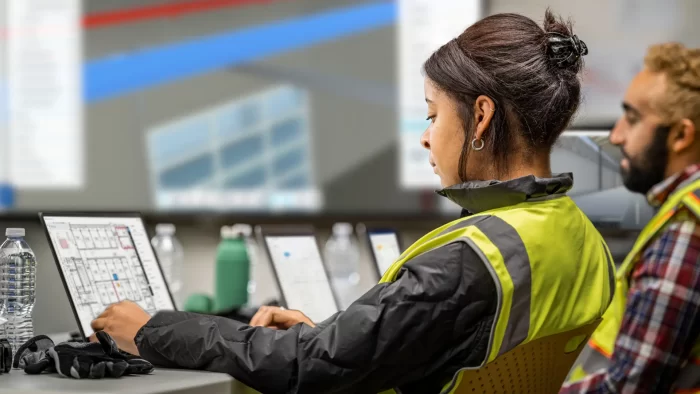Construction teams today are continuously asked to do more with less. While, as an industry, we have made considerable strides in improving our efficiency, there’s still work to be done—and it needs to happen sooner rather than later.
It’s estimated that we need to build 13,000 buildings each day between now and 2050 to meet the world’s growing population. This is a tall order in and of itself, and when combined with a shrinking workforce, it’s clear that we need to find even better ways of working together to keep up with demand.
That’s why teams are increasingly moving to design-build delivery methods—which typically finish 102% faster than traditional methods.
However, succeeding in this new landscape requires teams to take three key steps:
- Build trust and increase collaboration among project partners.
- Retain and use data to gain productivity and insight before, during, and after a project.
- Use technology to enhance collaboration without sacrificing efficiency.
Achieving one, let alone all of them may seem extremely difficult, but with Bridge for Design Collaboration, accomplishing these three things is well within reach.
Introducing Bridge for Design Collaboration
Bridge for Design Collaboration allows teams to work in their own project setups and share information across internal or external projects in a controlled design package workflow.
“Bridged” projects will automatically sync packages to one another’s project timeline, so teams can stay up to date on who’s delivered the latest designs and who’s falling behind.
Additionally, teams can visualize change between versions and determine which disciplines are impacted.
Let’s look at some of the ways that Bridge for Design Collaboration can benefit teams, projects, and AEC businesses in general.
Improve trust and collaboration in your teams
Did you know that low trust projects are less likely to hit deadlines by about half? When forced to work within the same digital environment, teams are reluctant to share their work in progress files and processes, which leads to late in the game and limited collaboration on designs.
Bridge for Design Collaboration can help address trust issues within project teams by promoting transparency and accountability in the system, all from separate and secure digital environments. Relevant project info and updates are seamlessly shared, giving teams the confidence to show their designs so other stakeholders can provide feedback sooner.
Ultimately, these improvements help you deliver projects faster. Research shows that high trust construction firms are 2X as confident in meeting project deadlines—saving them up to $4 million annually.
Improved productivity and project outcomes
Bridge for Design Collaboration helps solve a major pain point in construction: diminishing productivity. Sixty percent of GCs say that communication issues and document quality are key contributors to decreased labor productivity. Bridge for Design Collaboration alleviates productivity woes by allowing architects, engineers, and trades to work with their own standards, retain their own data, and share their work early and often. Greater frequency and control over sharing becomes the status quo, replacing hesitancy and delay.
In addition, Bridge for Design Collaboration promotes the smooth flow of data across internal and external teams. Designs and other necessary information are synced across multiple stakeholders with a single click keeping everyone in the loop and reducing the likelihood of data slipping through the cracks.
And because stakeholders are sharing designs from their own environments, they retain their data after the project, allowing them to get better over time.
Smoother operations and a healthier bottom line
Standardization helps you unlock massive efficiency gains, which improves your bottom line.
With Bridge for Design Collaboration, design firms and trades maintain their own standards—in their own project setup. This also allows teams to work seamlessly across multiple projects and improve upon established best practices and procedures.
No longer do they have to form-fit into the digital environment they previously had to work in.
Final words
Navigating today, and tomorrow’s, construction landscape requires construction pros to work more closely with other teams, improve data management, and leverage the right construction tech. Bridge for Design Collaboration covers all these aspects by fostering trust and collaboration while ensuring data retained for future productivity gains.
Take your construction projects to new heights by leveraging the capabilities of Bridge for Design Collaboration. Learn more here.



